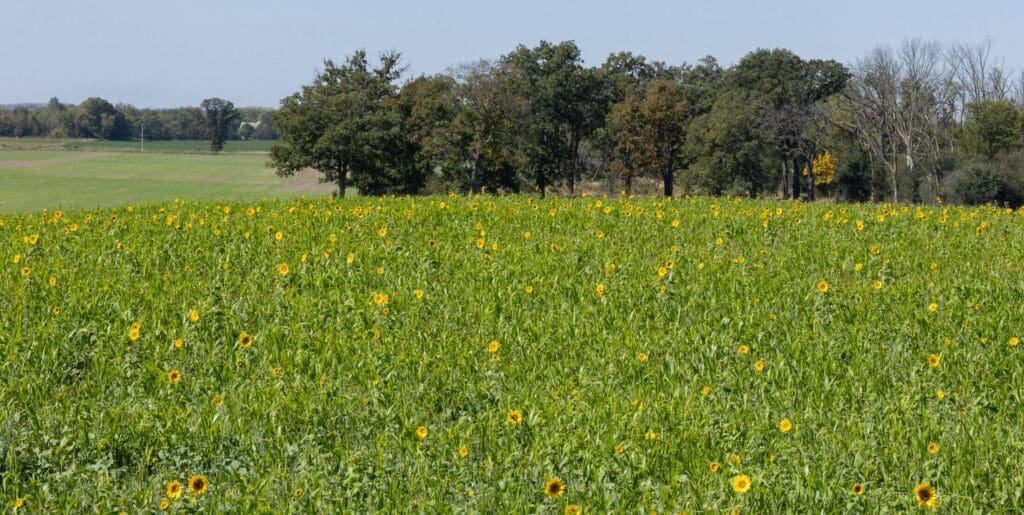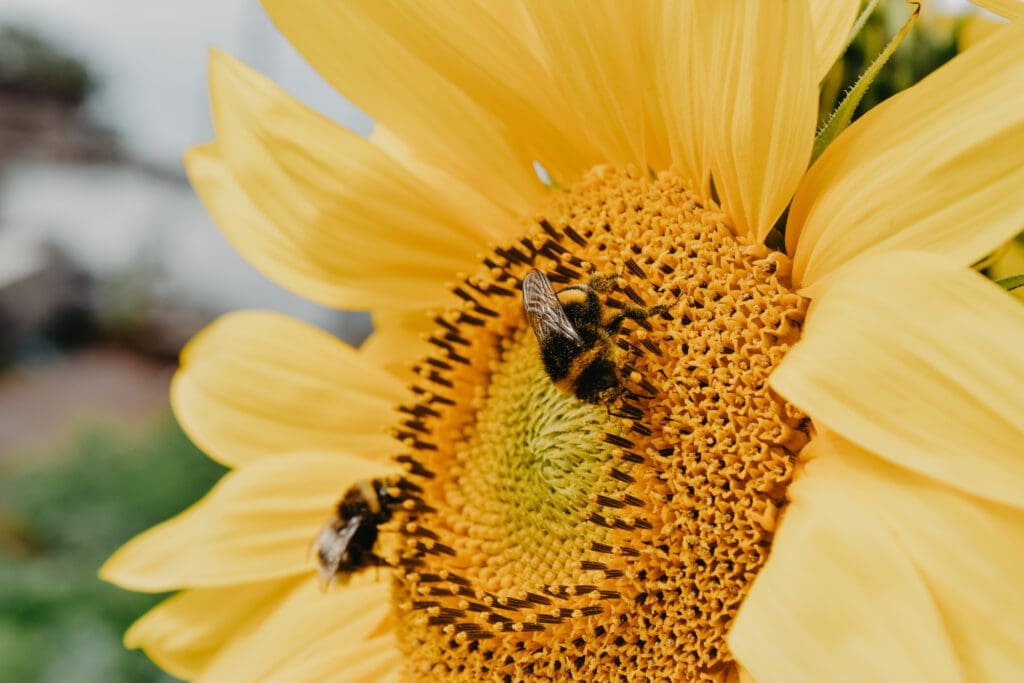
Sunflowers are more than just cheerful blooms in the garden. When used as a cover crop, they provide powerful benefits for soil, biodiversity, and sustainable food production. Their deep roots, towering growth, and vibrant flowers make them a multifunctional choice for both home gardeners and farmers.
What Is a Sunflower Cover Crop?
A sunflower cover crop is planted to protect and improve soil, not just for looks. Sunflowers grow fast and adapt to many climates. They provide quick ground cover between main crops. In addition, they add beauty to any space.
- Improve soil structure with deep roots
- Suppress weeds by shading the ground
- Attract pollinators and beneficial insects
Because of this, adding sunflowers to your crop plan is both practical and sustainable.

Key Benefits for Soil Health
Sunflowers are excellent for soil health. Their roots break through hard soil, allowing water and air to move better. As they break down, they also return nutrients to the earth. In addition, the organic matter supports microbes that keep soil alive.
- Better aeration and drainage
- More organic matter and nutrients
- Cleaner soil through phytoremediation
As a result, crops that follow sunflowers often grow stronger and healthier.
Sunflowers in Crop Rotation
Adding sunflowers to a rotation helps break pest and disease cycles. Unlike other crops, they do not host the same pests. This change lowers pressure on your next crop. In addition, sunflowers encourage soil biodiversity, which supports long-term health.
- Disrupt pest and disease cycles
- Reduce chemical use
- Boost soil biodiversity
As a result, farmers and gardeners can rely less on sprays and more on natural systems.
Weed Suppression and Erosion Control
Sunflowers are strong defenders against weeds. Their tall canopy blocks sunlight and crowds out unwanted plants. At the same time, their roots hold soil together. This helps prevent erosion from wind and rain.
- Natural weed control
- Protection against erosion
- Healthier, more stable soil
As a result, land stays productive and fertile for longer.
Pollinator and Beneficial Insect Habitat
Sunflowers are magnets for pollinators like bees and butterflies. Their wide blooms and nectar draw in helpful insects. These visitors improve pollination for other crops. In addition, predatory insects that feed on pests are also attracted. This means less need for chemical sprays.
- Attract bees and butterflies
- Support predator insects
- Lower chemical inputs
In short, sunflowers build a healthier, more balanced ecosystem.

Phytoremediation Benefits
Sunflowers can even clean polluted soil. They absorb heavy metals and other toxins through their roots. In addition, their biomass adds organic matter when returned to the soil. This process makes the ground safer and more fertile.
- Extract heavy metals
- Add organic matter
- Improve soil health
Sunflower Seeds: Culinary and Practical Uses
Sunflower seeds are both tasty and useful. They can be eaten raw, roasted, or baked into dishes. In addition, they are rich in protein and healthy fats. Seeds can also be pressed for oil or used as bird feed to attract wildlife.
- Culinary uses: snacks, salads, baking
- Press for sunflower oil
- Use as nutritious birdseed
How to Grow Sunflowers as a Cover Crop
Growing sunflowers is simple. First, choose a sunny spot with at least six hours of light. Next, prepare the soil by removing weeds and loosening the top layer. Sow seeds 2–4 cm deep, spaced 15–30 cm apart. Then water well to start germination.
- Pick a sunny site
- Prepare and loosen soil
- Sow 2–4 cm deep
- Water until established
- Fertilize lightly if needed
Once established, sunflowers are hardy and tolerate some drought. However, protect seedlings from birds with netting if required.
Best Sunflower Variety for Cover Cropping
For cover cropping, Black Oil Sunflowers are the best choice. They grow quickly, provide dense ground cover, and produce plenty of organic matter for soil improvement.
Using Sunflowers in Small Urban Gardens
Sunflowers are not only for farms. They also work in small spaces. Their vertical growth makes good use of limited ground. For example, you can plant them along fences or mix them with herbs and vegetables. In addition, they grow well in large pots or containers.
- Intercrop with herbs and veggies
- Grow along fences for height
- Use containers for mobility
Sustainable Farming and Farm-to-Table
Sunflowers are perfect for farm-to-table systems. They feed the soil naturally, support crop rotation, and provide edible seeds. In doing so, they reduce chemical use and increase food quality. In addition, they support the goal of sustainable local food production.
When to Sow Sunflowers as a Cover Crop in Australia
Sunflowers thrive in warm conditions with plenty of sunshine. The ideal sowing time varies depending on your region. Use this guide to plan sunflower cover crops in your area:
| Region / Climate Zone | Best Sowing Time | Notes |
|---|---|---|
| North Queensland (Cairns, Townsville) | April – August | Best grown in the dry season. Avoid peak summer humidity and wet season storms. |
| Central Queensland (Rockhampton, Mackay) | March – September | Plant after wet season rains ease. Good results through autumn and winter. |
| South Queensland (Brisbane, Toowoomba, Gold Coast) | August – March | Ideal to sow in spring and summer. Can also plant in late winter with warm soil. |
| Northern NSW (Byron Bay, Lismore, Coffs Harbour) | August – March | Similar to South Queensland. Plant once frosts have passed. |
| Temperate Zones (VIC, SA, TAS, coastal WA/NSW) | September – January | Best sown in spring and early summer for strong growth. |
| Cool / Alpine Zones (ACT, Southern VIC, TAS highlands) | October – December | Wait until frosts are over. Shorter growing season. |
Quick Growing Guide for Sunflower Cover Crops
| Growing Step | Details |
|---|---|
| Soil | Loose, well-drained soil with compost added before planting. |
| Position | Full sun, at least 6 hours daily. |
| Sowing Depth | 2–4 cm deep, 15–30 cm apart. |
| Watering | Keep soil moist for germination. Once established, water weekly if rainfall is low. |
| Fertiliser | Apply a balanced fertiliser at planting. Avoid high nitrogen levels. |
| Growth Time | 70–100 days to maturity, depending on variety. |
| Termination | Cut and incorporate into soil before seeds fully harden. |
Common Questions
- Why are leaves yellow? Check water and soil nutrients.
- Why are plants small? Soil may be hard or low in nutrients.
- Pests attacking? Attract predator insects or use organic deterrents.
Conclusion: Sunflowers as a Smart Cover Crop
Sunflowers give many benefits. They improve soil, protect against weeds, attract pollinators, and supply healthy seeds. In addition, they are easy to grow and fit into any garden or farm. For these reasons, sunflowers are a smart choice for anyone who wants a healthier, more productive garden in Australia.
Find out more about how sunflowers support biodiversity here.
Click HERE to buy Black Sunflower Seeds and start your own cover crop journey today!
